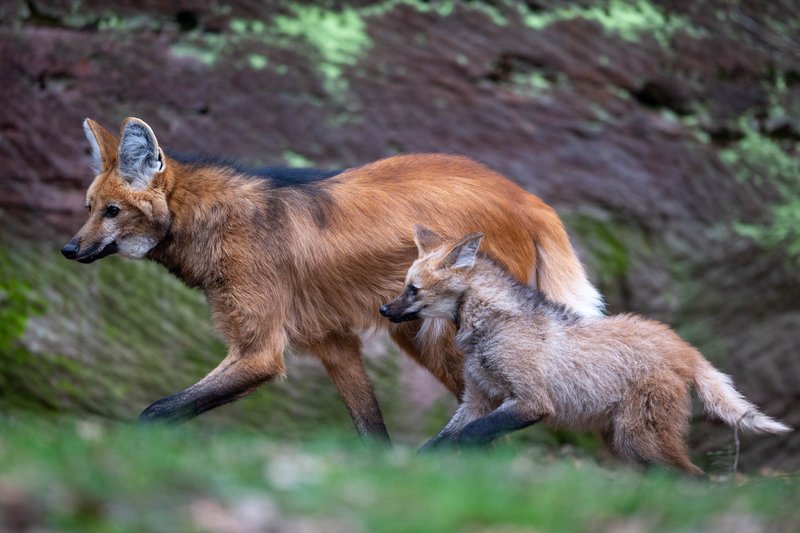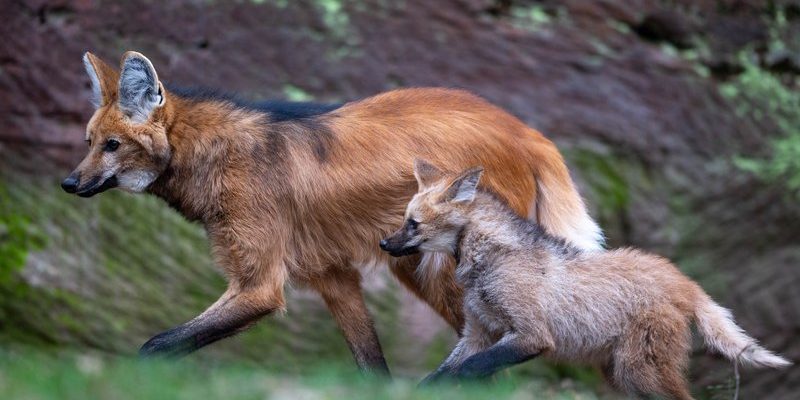
The maned wolf is often described as a shy and solitary creature, native to the grasslands and scrub forests of South America. It’s not your typical wolf, but rather, it stands out with its distinct appearance and unique behaviors. Just like how every piece in a puzzle is essential to see the full picture, the maned wolf’s presence and activities contribute significantly to maintaining ecological balance. So, let’s dive deeper into how this remarkable creature fits into its world!
The Maned Wolf: A Unique Canid
To understand the role of the maned wolf, it helps to know a bit about what makes it special. Unlike typical wolves, which hunt in packs, the maned wolf is mostly solitary. It has long legs, which make it well adapted to navigating the tall grasses of its habitat. Its striking reddish-brown coat and large ears give it a distinct look, earning it the nickname of the “guardian of the savanna.”
One fascinating aspect is its diet. The maned wolf is an omnivore, which means it eats both plants and animals. About 50% of its diet consists of fruits, especially the delicious wolf apple. By munching on these fruits, the maned wolf aids in seed dispersal, helping plants grow and flourish in various regions. This behavior illustrates how this unique canid is intricately linked to the health of its ecosystem.
So, you might be wondering: how exactly does its dietary preference impact the environment? When the maned wolf consumes fruits and excretes the seeds later, it allows plants to spread to new areas. Without seed dispersers like the maned wolf, many plant species might struggle to thrive and grow, which can destabilize the ecosystem.
Predator or Prey: Balancing the Ecosystem
In the grand scheme of things, every species has its role, and the maned wolf is no exception. While it primarily hunts small mammals and birds, it also serves as prey for larger predators. This dual role helps keep the population of prey species in check and promotes biodiversity.
The maned wolf’s hunting habits are fascinating too. It uses a combination of sight and smell to track down its food. This keen sense of awareness ensures that it hunts sustainably, taking only what it needs. Without efficient predators like the maned wolf, certain species could overpopulate, leading to a collapse in the food web.
Think of it this way: if every piece of the food chain starts to wobble without balance, it can lead to a domino effect. The maned wolf, by maintaining its hunting balance, ensures that the ecosystem remains healthy and diverse. This aspect of their role is truly crucial for keeping the entire system of life functioning smoothly.
The Impact of Habitat Loss
Unfortunately, the maned wolf faces significant threats from habitat loss due to agriculture and urbanization. As more land is cleared for farming or building, the grasslands and savannas where these wolves thrive are disappearing. This loss not only impacts the maned wolf directly but also disrupts the entire ecosystem.
When these wolves lose their home, it doesn’t just affect them. Their disappearance can lead to overpopulation of certain prey species like rodents. Those rodents can then consume more crops or vegetation, affecting farmers and other wildlife. It’s a ripple effect that starts with the maned wolf’s decline and spreads far beyond.
You might be thinking, “What can we do about this?” One solution is supporting conservation efforts that protect the habitats of the maned wolf. By being aware of these issues, we can advocate for policies and practices that prioritize preserving these unique ecosystems.
Community Awareness and Conservation Efforts
When it comes to preserving the maned wolf and its habitat, community awareness is vital. Organizations dedicated to conservation often work directly with local communities to educate them about the importance of this species. They help people understand that protecting the maned wolf also protects the land and the biodiversity that lives alongside it.
Moreover, these communities can benefit from conservation practices. By promoting sustainable agriculture or eco-tourism, they can find ways to thrive without destroying the environment. Supporting these initiatives creates a win-win situation where both the local people and the maned wolf can live harmoniously.
Thinking about how we can individually contribute? Participating in or supporting local conservation events can raise awareness and spur action. Even spreading the word about the importance of the maned wolf on social media can make an impact!
Key Takeaways
The maned wolf serves as a crucial component of the ecosystem, acting both as a predator and a seed disperser. Its unique diet and hunting habits promote biodiversity and maintain the balance of life in its habitat. Unfortunately, it faces significant threats from habitat loss, which has wider implications for the ecosystem.
As we’ve seen, protecting the maned wolf goes hand in hand with nurturing the environment around it. Our combined efforts in community awareness and conservation can lead to healthier ecosystems. So next time you think of the maned wolf, remember that its role in nature is not just about survival—it’s about maintaining the dance of life itself.
In conclusion, the maned wolf might look like an unusual canid, but it’s much more than that. It’s a vital thread in the complex tapestry of the ecosystem. Protecting this unique creature means protecting the rich diversity of life that relies on it. Together, we can ensure that this remarkable species continues to thrive in the wild.

